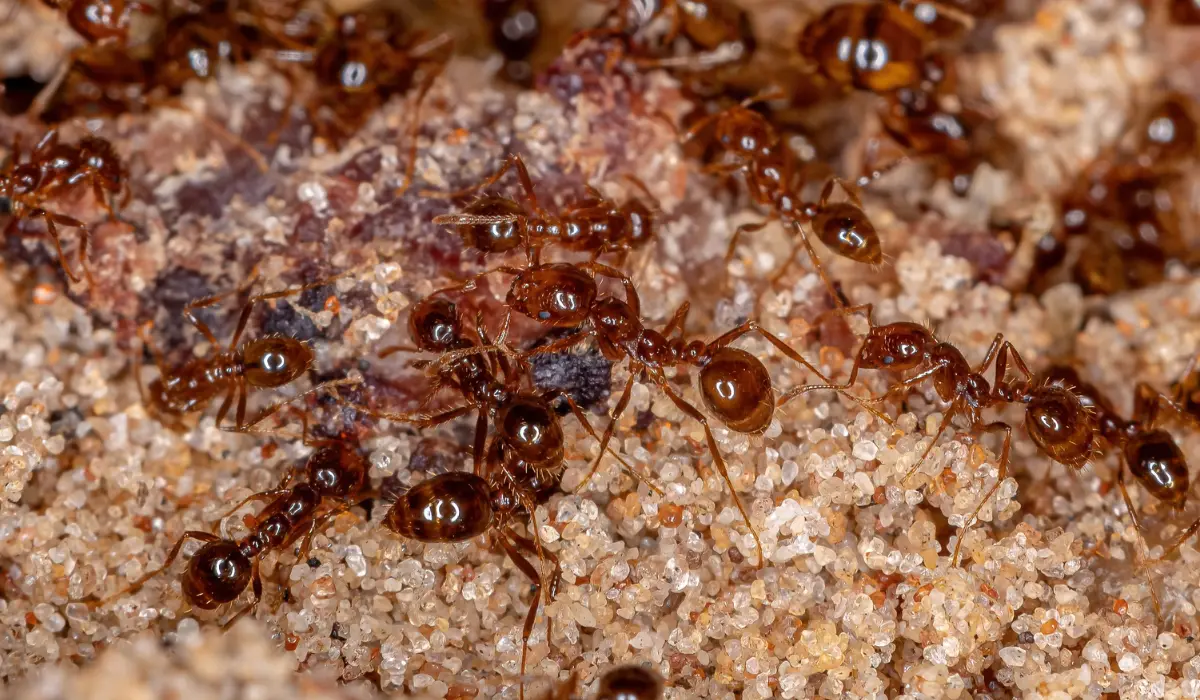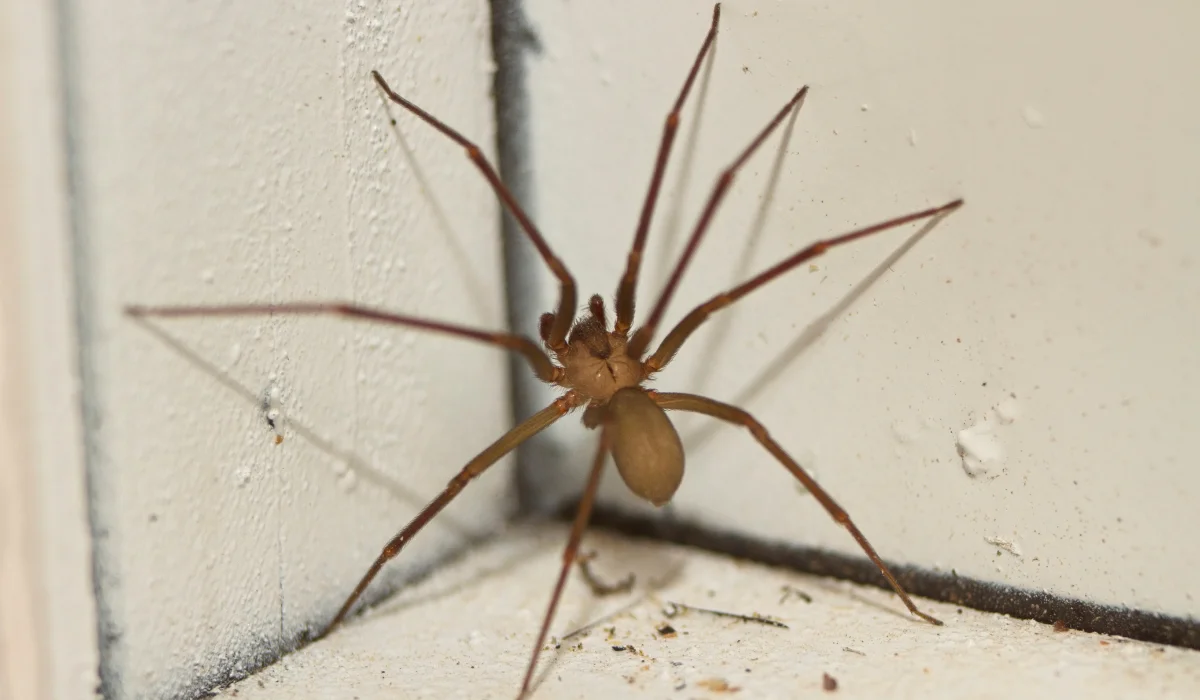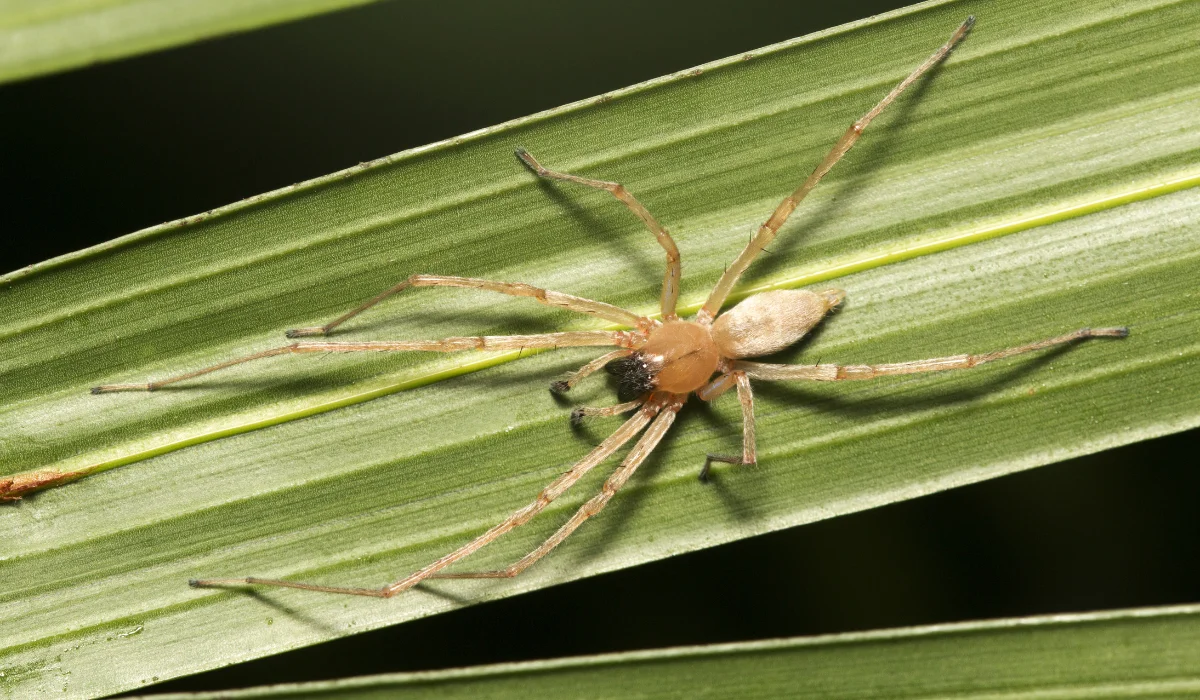New Orleans is known not just for its jazz and jambalaya but also for being a battleground against common ants. The city’s warm, humid weather makes it a paradise for ants, bringing nuisances like the destructive Argentine ant.
Have you ever wondered what ant species are outside your patio? Keep reading to learn more about the ant world in New Orleans.
Key Takeaways
- New Orleans is home to eight types of ants, each with specific behaviors and characteristics impacting residents and environments.
- Early detection of ant infestations in New Orleans is crucial, with signs including visible ant pathways, nest sites, and increased sightings in kitchens and bathrooms.
- Proactive home maintenance and cleanliness, including sealing entry points and managing moisture effectively, are critical strategies for preventing ant invasions in New Orleans.
- For severe ant infestations in New Orleans, it is advisable to contact professional pest control services to ensure effective and tailored solutions for your home.
9 TYPES OF ANTS FOUND IN NEW ORLEANS
New Orleans hosts various species of ants, each with unique traits and impacts on the local environment. Here are the nine common types of ants in the area.
1. Red Imported Fire Ants
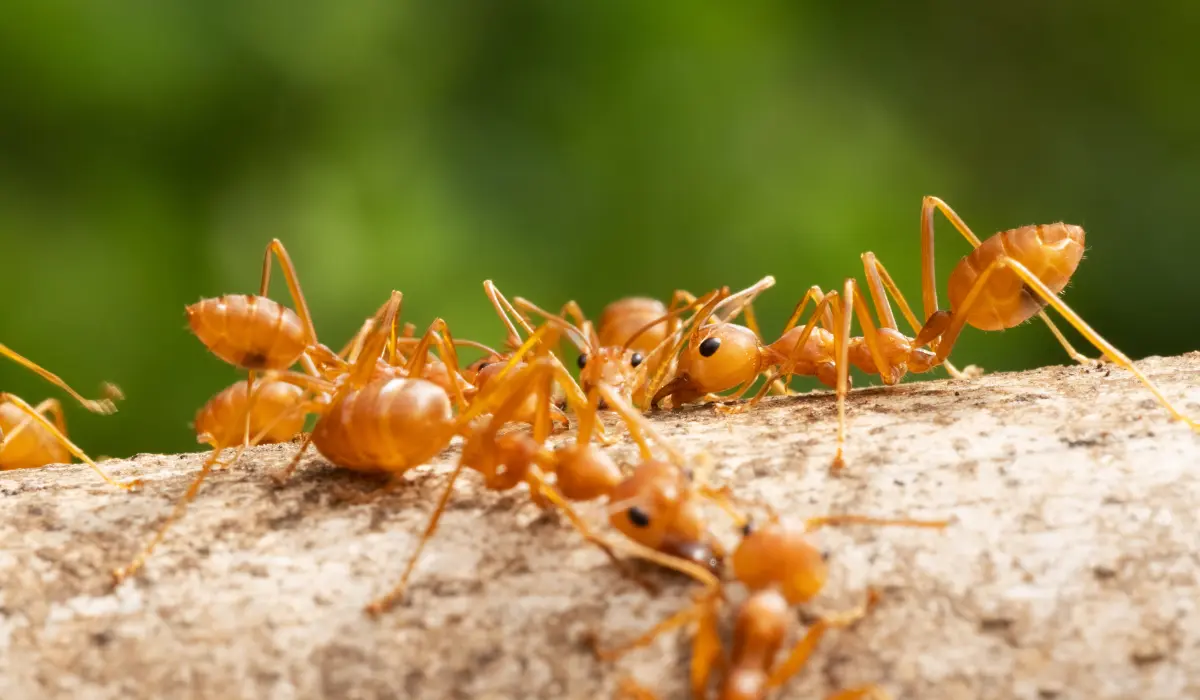
Red imported fire ants are notorious for their painful stings that can pose a health risk to Louisiana, Florida, Texas, and Mississippi homeowners.
| Aspects | Description |
|---|---|
| Appearance | Dark reddish-brown |
| Behavior | Aggressive when threatened |
| Nesting | Large, mound-shaped nests in the soil |
| Foraging Habits | Omnivorous, prefer meats and greasy foods |
| Identifying Characteristics | Painful sting, workers vary in size |
2. Pharaoh Ants
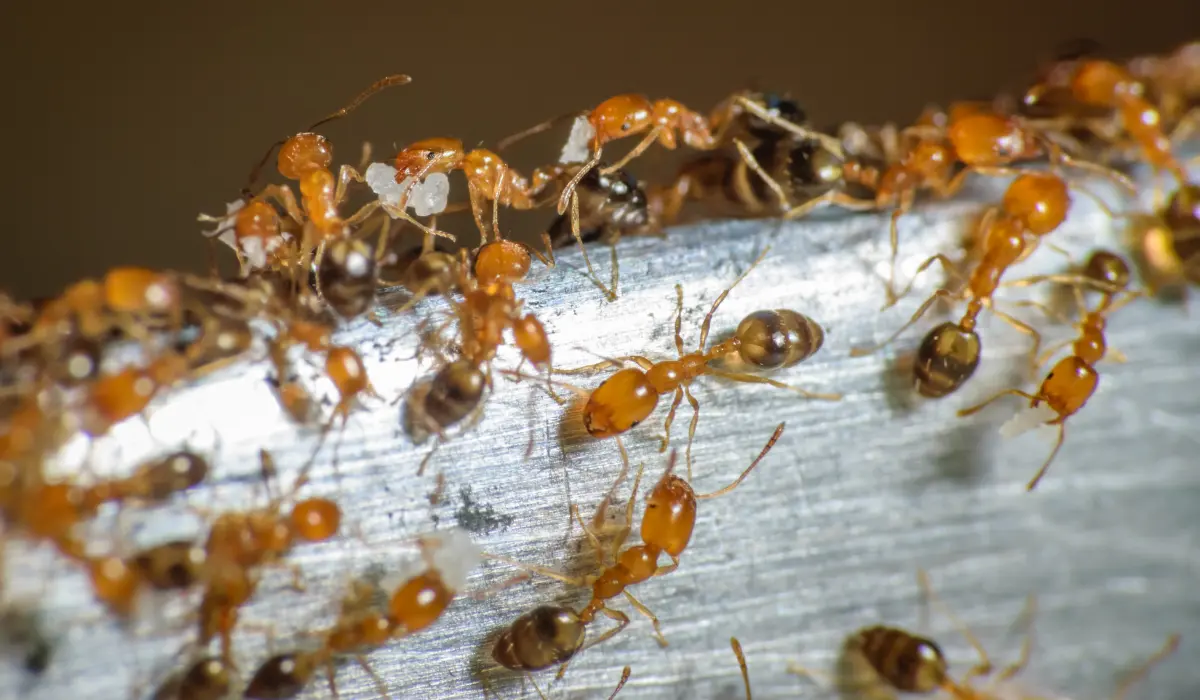
Pharaoh ants are a common household pest in many parts of the world. They are a menace because they can spread disease through various environments.
| Aspects | Description |
|---|---|
| Appearance | Light yellow to red |
| Behavior | Avoid confrontation, hard to eradicate |
| Nesting | Indoor nests in hidden locations, such as voids behind baseboards |
| Foraging Habits | Prefer sweets, fats, and proteins |
| Identifying Characteristics | Very small, about 1/16 inch long |
3. Odorous House Ants
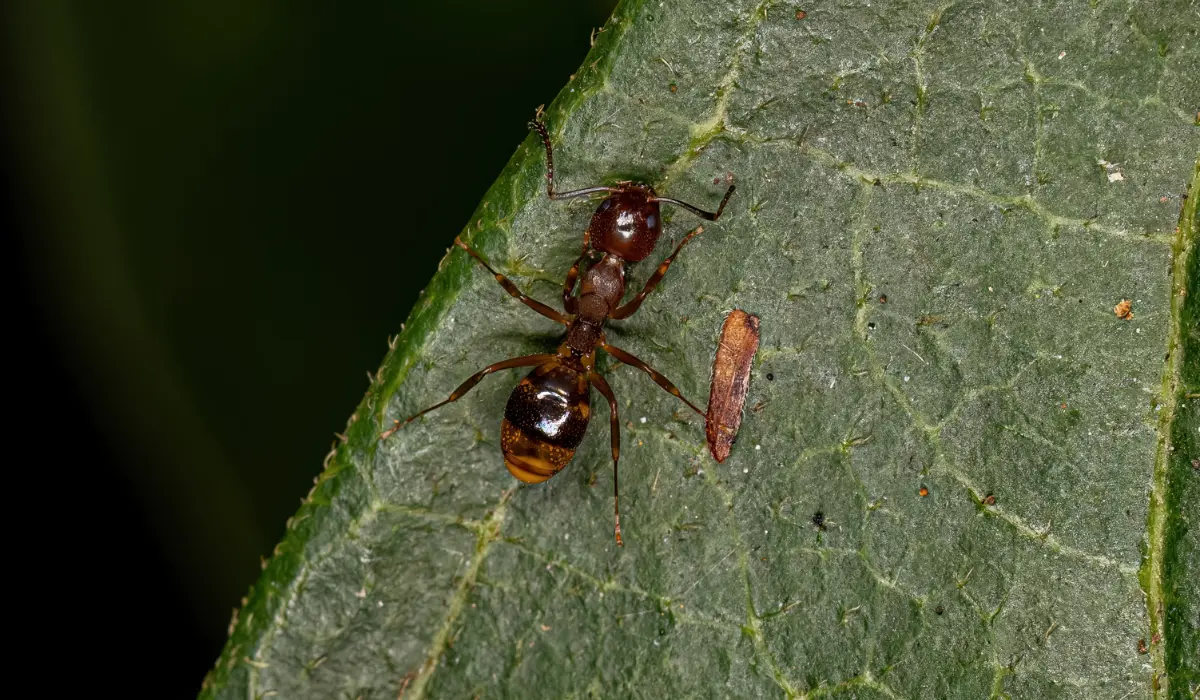
Odorous house ants can be a nuisance in homes. When crushed, they give off a rotten smell.
| Aspects | Description |
|---|---|
| Appearance | Dark brown to black |
| Behavior | Non-aggressive, colonies can be large |
| Nesting | Prefer moist areas, often found near heat sources |
| Foraging Habits | Sweet foods, but eat various household foods |
| Identifying Characteristics | When crushed, emits an odor similar to rotten coconut |
4. Acrobat Ants
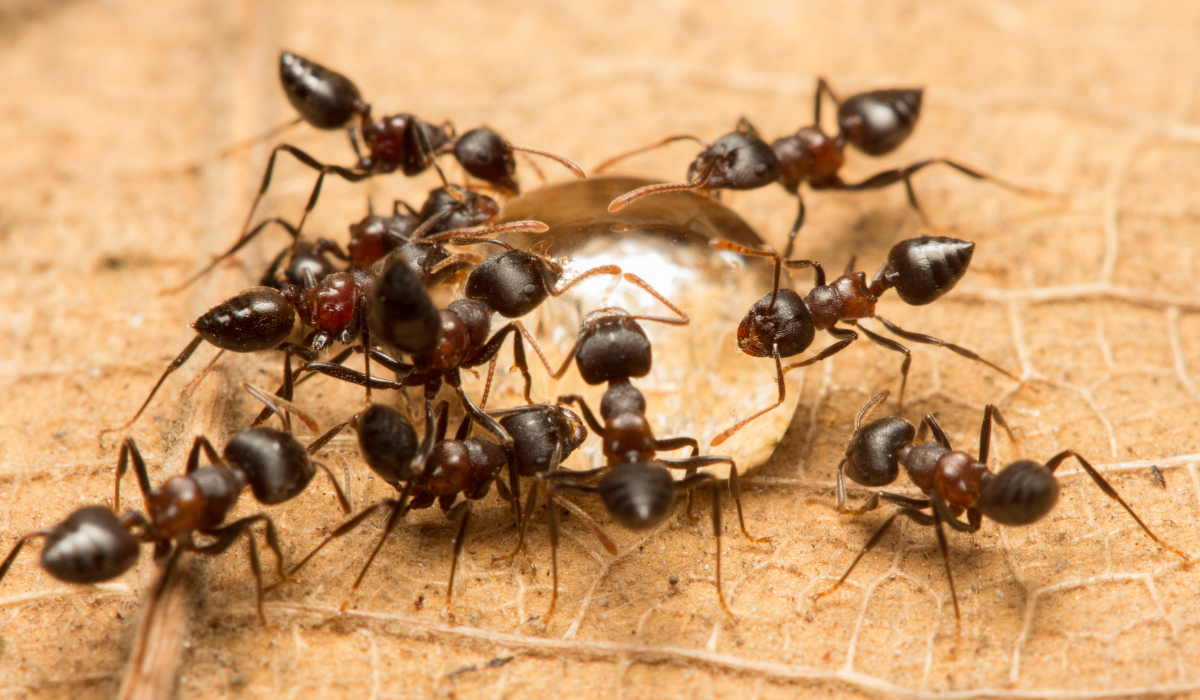
These ants get their name from their distinctive ability to raise their abdomen over their thorax and head, especially when disturbed.
| Aspects | Description |
|---|---|
| Appearance | Light brown to black |
| Behavior | Agile climbers |
| Nesting | Inside wood damaged by moisture or termites |
| Foraging Habits | Eat a variety of foods, including sweets and proteins |
| Identifying Characteristics | Heart-shaped abdomen, capable of acrobatic movements |
5. Little Black Ants
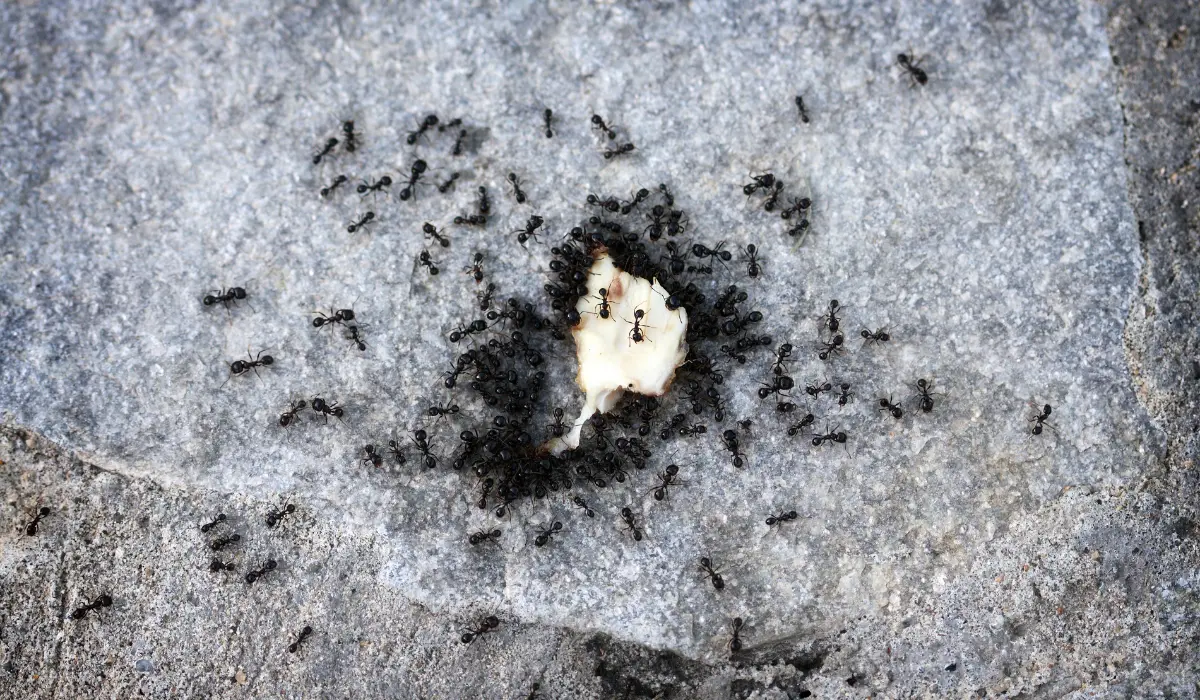
Although they pose no serious danger to residents, little black ants can be invasive pests when they invade homes and yards.
| Aspects | Description |
|---|---|
| Appearance | Dark brown to black |
| Behavior | Mild-mannered |
| Nesting | Live in cracks, crevices, or under rocks, also indoors |
| Foraging Habits | Eaters of both greasy foods and sweets |
| Identifying Characteristics | Small, monomorphic workers about 1/16 inch long |
6. Ghost Ants
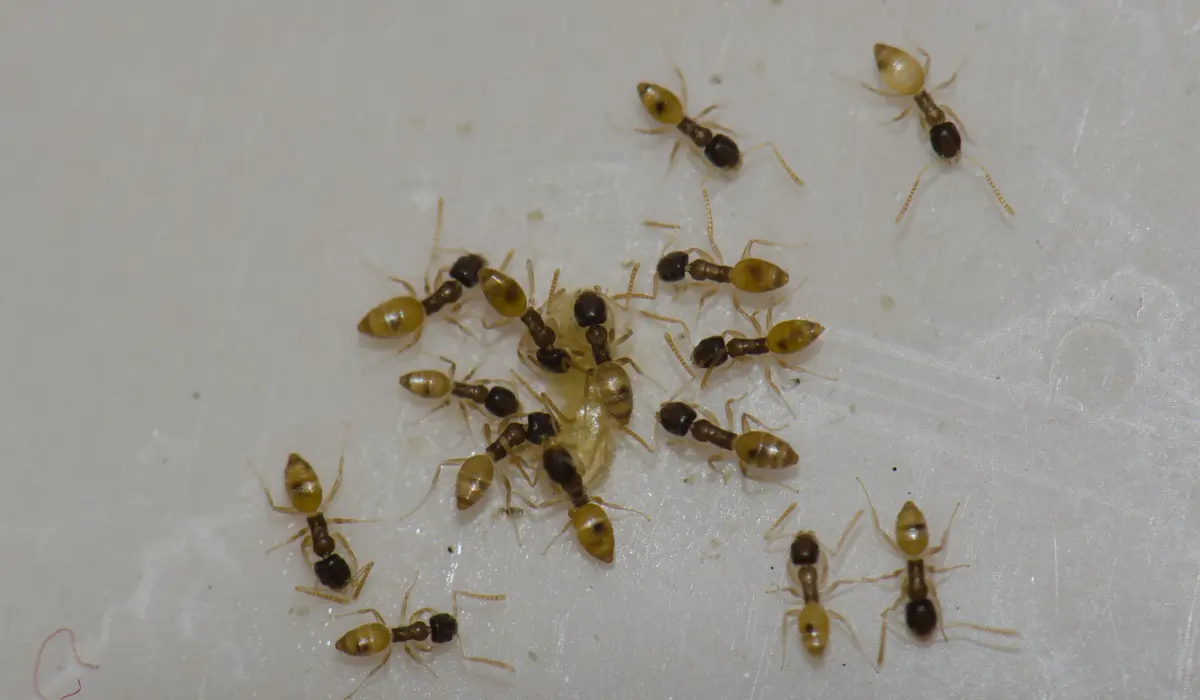
Ghost ants, or sugar ants, are so named for their pale color and elusive nature. They can contaminate food as they forage.
| Aspects | Description |
|---|---|
| Appearance | Pale, almost transparent legs and abdomen |
| Behavior | Skittish, elusive |
| Nesting | Prefer humid environments, nests often split into multiple locations |
| Foraging Habits | Fond of sweets, especially honeydew |
| Identifying Characteristics | Very small and hard to detect, ghost-like appearance |
7. Pavement Ants
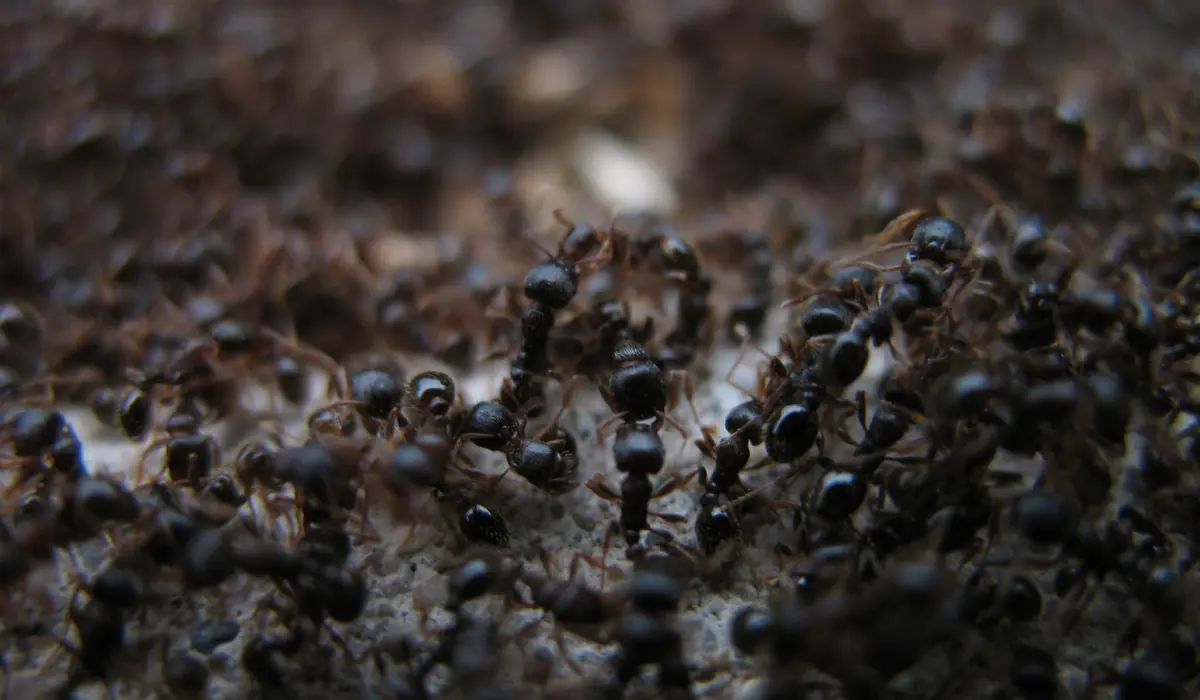
Though not typically harmful, Pavement ants pose a risk to humans primarily through the contamination of food sources and the annoyance of their persistent presence in and around homes.
| Aspects | Description |
|---|---|
| Appearance | Small, typically dark brown to black; about 2.5 to 4 mm in length |
| Behavior | Aggressive towards other ant species; form large colonies |
| Nesting | Prefers to nest under pavements, stones, and along curbs |
| Foraging Habits | Known to forage up to 30 feet from their nest in search of food |
| Identifying Characteristics | Antennae with 12 segments ending in a 3-segmented club; parallel lines on head and thorax |
8. Argentine Ants
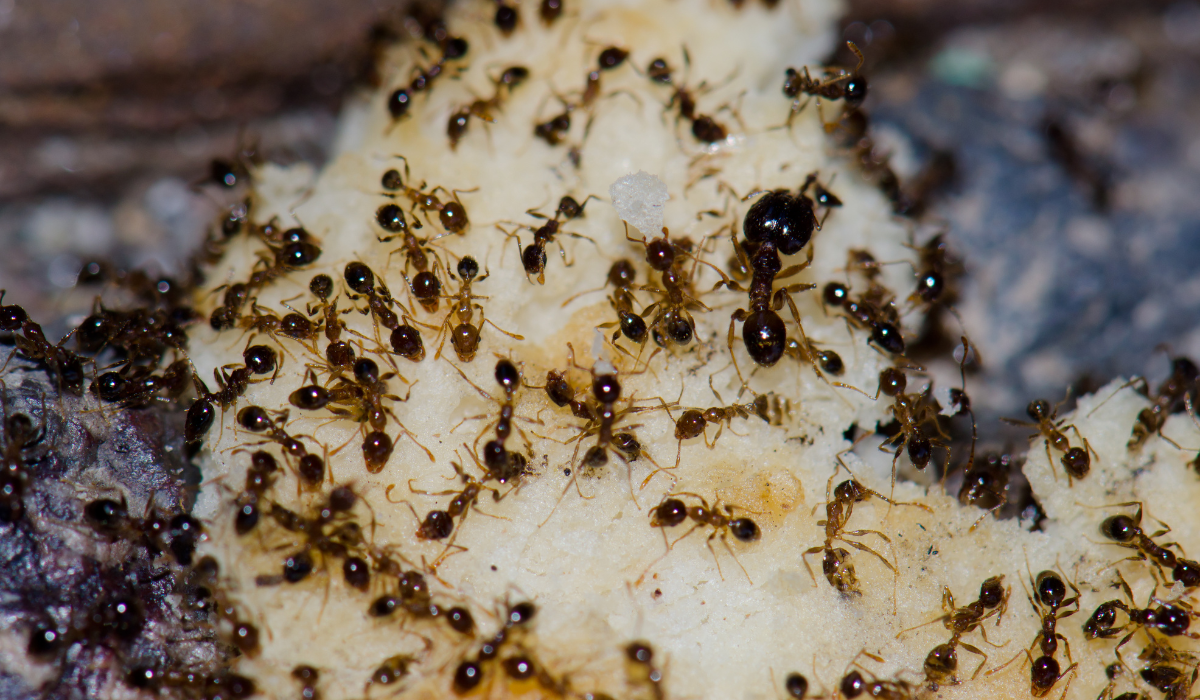
Native to South America, the Argentine ants pose a significant risk to residents in New Orleans due to their aggressive nature, which leads to the displacement of native ant species and disrupts the local ecosystem.
| Aspects | Description |
|---|---|
| Appearance | Small, light to dark brown, shiny, uniform in size |
| Behavior | Highly social, aggressive, form supercolonies |
| Nesting | Prefer moist areas, often found in soil, under boards or stones |
| Foraging Habits | Form long trails, actively seek out food day and night |
| Identifying Characteristics | Lack the constriction between the abdomen and thorax typical of other ants |
9. Carpenter Ants
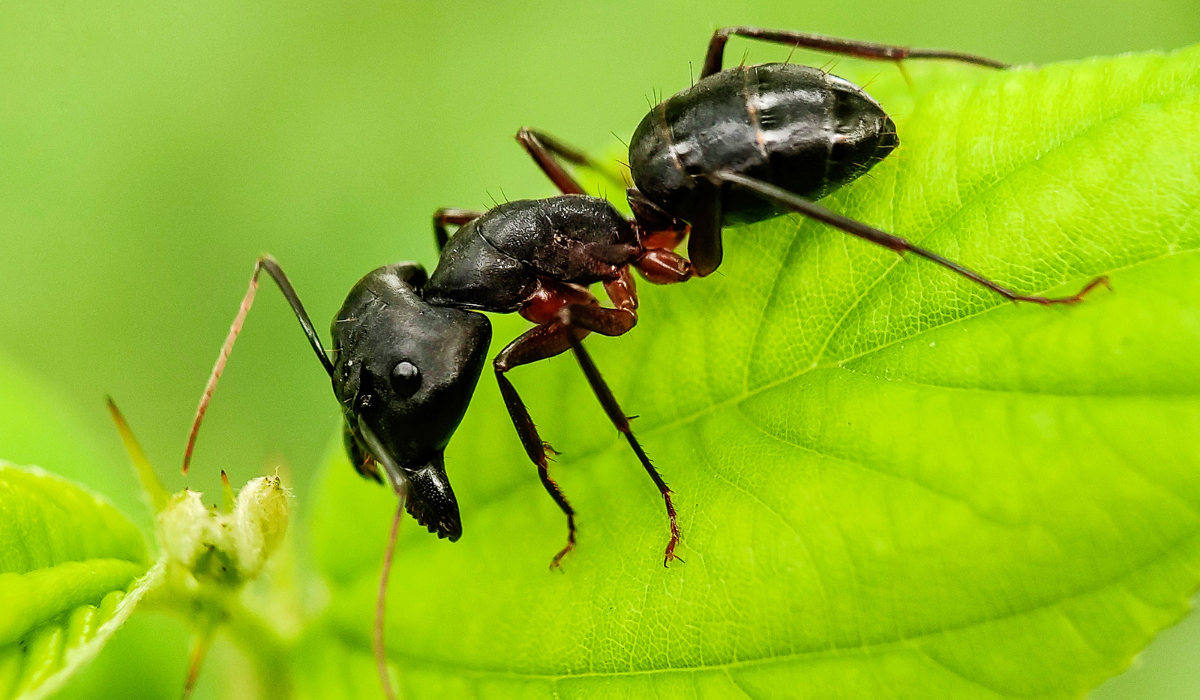
Carpenter ants excavate wood to create their nests, compromising the integrity of buildings over time. This poses a risk primarily because they can cause structural damage to homes.
| Aspects | Description |
|---|---|
| Appearance | Large ants, typically black, red, or a combination of black and red |
| Behavior | Social insects with a strong preference for moist, decayed wood |
| Nesting | Create nests in wood by chewing wood grain to form smooth galleries |
| Foraging Habits | Active at night, form long foraging trails to food sources |
| Identifying Characteristics | Elbowed antennae, a smoothly rounded thoracic profile, and a single node between the thorax and abdomen |
SIGNS OF ANT PROBLEMS IN NEW ORLEANS
As New Orleans residents, you can overlook the early signs of ant problems during daily routines. So, recognizing these indicators promptly becomes crucial to prevent large colonies from causing painful stings and structural damage.
What Are the Signs
Knowing when ants are becoming a problem is crucial. As residents, you should keep an eye out for:
- Ant Pathways: Consistent lines of ants, indicating a pheromone trail from their nest to food sources.
- Nest Sites: Small piles of soil or debris within the premises show where ants may have established colonies.
- Kitchens & Bathrooms: Increased ant sightings in these areas often signal a nearby ant infestation.
- Property Damage: Potential damage caused by some ant species (e.g., acrobat ants nesting in wood).
Where to Look
Identifying the typical hiding spots for ants effectively helps target the ant problem. Critical areas to inspect include:
- Kitchens: Due to easy access to food, these areas are hotspots for ant activity.
- Bathrooms: Moist environments attract ants searching for water.
- Basements: Often out of sight, basements can harbor large ant colonies.
- Foundation Perimeter: Regular checks around the home’s foundation can reveal ant entry points and nesting spots.
KEEPING ANTS AWAY FROM YOUR NEW ORLEANS HOME
In New Orleans, you can take specific steps to fend off ant invasions before they become a bigger headache, focusing on proactive measures and consistent upkeep.
Home Prevention Tips
When it comes to keeping ants away in Louisiana, it’s about staying ahead of the game. Here’s how you can prevent large numbers from setting up shop.
| Tasks | Details |
|---|---|
| Inspect seals and gaps | Check windows, doors, and utility lines for openings. |
| Garbage disposal | Remove food waste and rinse containers. |
| Countertop cleaning | Wipe surfaces to remove crumbs and spills. |
| Store food securely | Use airtight containers for pantry items. |
| Landscape maintenance | Keep vegetation trimmed away from the house. |
| Monitor moisture | Fix leaks and eliminate standing water. |
PROFESSIONAL ANT CONTROL SOLUTIONS IN NEW ORLEANS
You have several professional ant extermination services when dealing with ant infestations in New Orleans. Here’s what you can expect:
- Inspection: Pest control experts start by identifying the type of ants and locating their colonies.
- Customized Treatment Plans: They craft tailored strategies, including baits, chemical sprays, pesticides, and non-toxic options.
- Exclusion Techniques: Specialists might seal entry points to prevent ants from re-entering.
- Follow-up Services: Scheduled follow-ups ensure that the ant problem is entirely resolved.
- Preventive Advice: Professionals provide tips on how to keep ants at bay in the future.
SHOULD YOU GET IN TOUCH WITH PEST CONTROL PROFESSIONALS?
When dealing with New Orleans ants, you may ask whether it’s time to contact pest control professionals.
If you discover a large colony or multiple colonies on your property, this could be beyond the scope of DIY pest control methods.
Whether you’re in Baton Rouge or New Orleans, seeking expert help should be easy. For immediate intervention for a severe infestation, let Lajaunie’s ant control specialists tailor a solution that’s right for your home.
For more information about the areas we service, visit our location page.
 By: LaJaunie's Pest Control
By: LaJaunie's Pest Control 